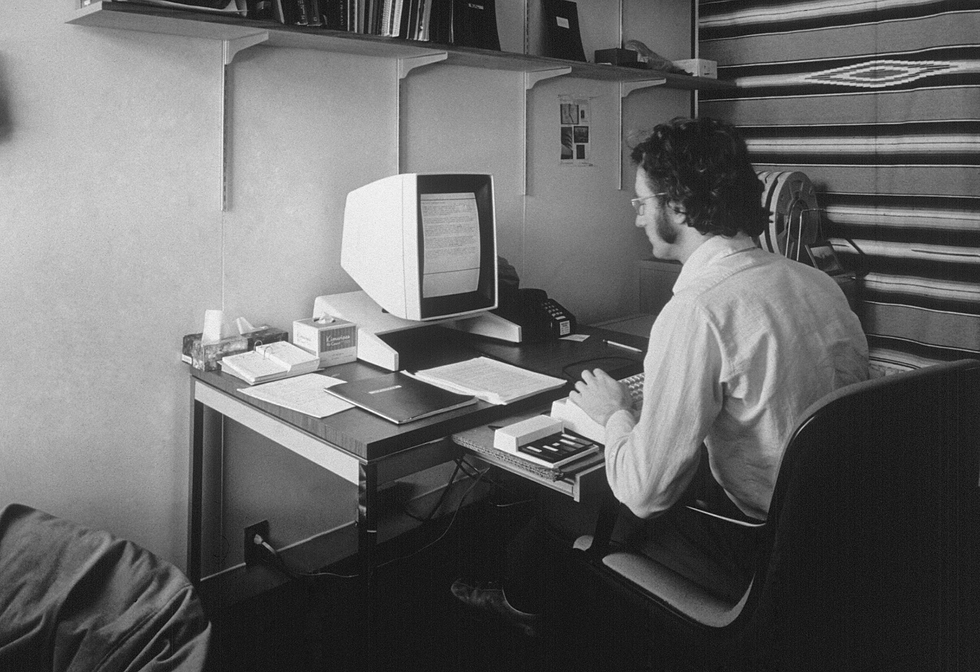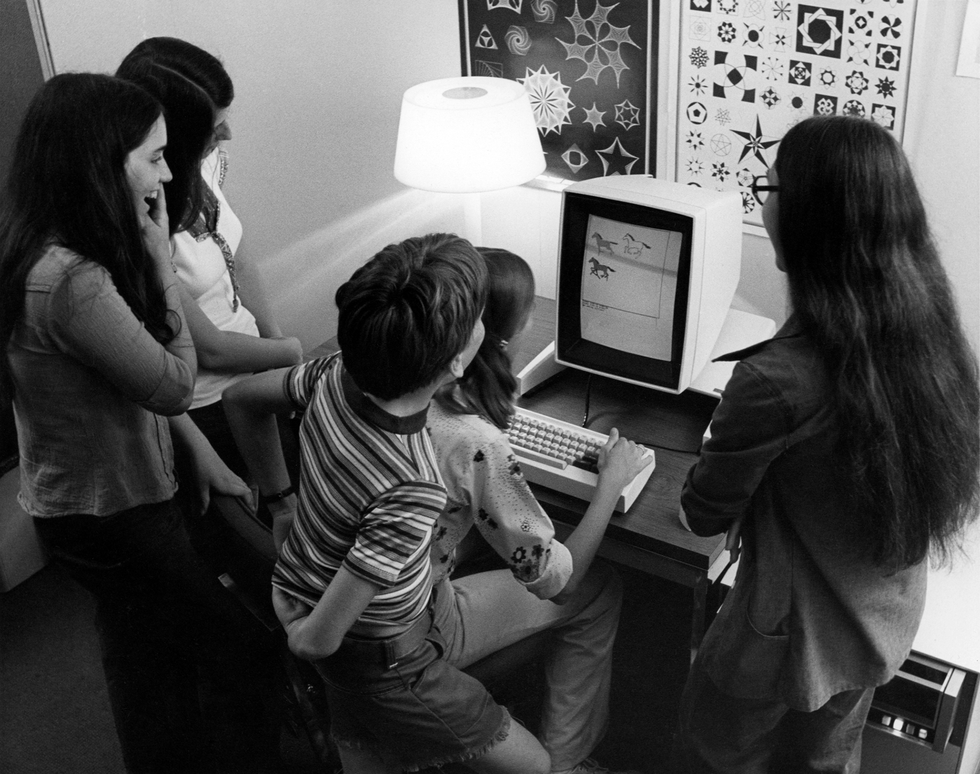50 Years Later, We’re Still Living in the Xerox Alto’s World
The Alto transformed computing. And the changes stuck
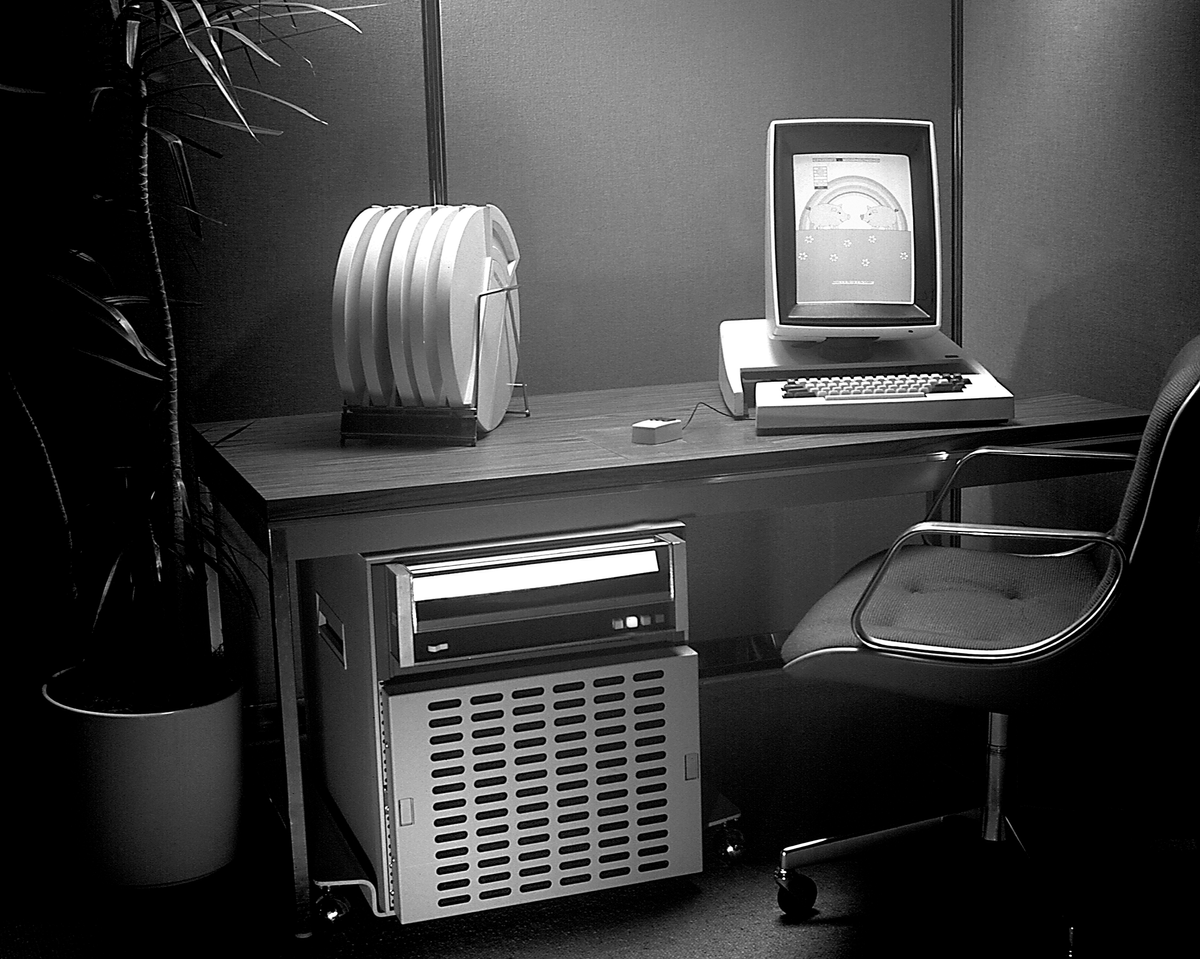
By 1975, dozens of Xerox PARC’s researchers had personal Altos in their offices and used them daily. The large cabinet contained a CPU, memory, and a removable disk pack. On the desk are additional disk packs and the Alto’s vertical display, mouse, and keyboard.
I’m sitting in front of a computer, looking at its graphical user interface with overlapping windows on a high-resolution screen. I interact with the computer by pointing and clicking with a mouse and typing on a keyboard. I’m using a word processor with the core features and functions of Microsoft Word, Google Docs, or LibreOffice’s Writer, along with an email client that could be mistaken for a simplified version of Apple Mail, Microsoft Outlook, or Mozilla Thunderbird. This computer runs other software, written using object-oriented programming, just like the popular programming languages Python, C++, C#, Java, JavaScript, and R. Its networking capabilities can link me to other computers and to high-quality laser printers.
You are probably thinking, “So what? My computer has all that too.” But the computer in front of me is not today’s MacBook, ThinkPad, or Surface computer.
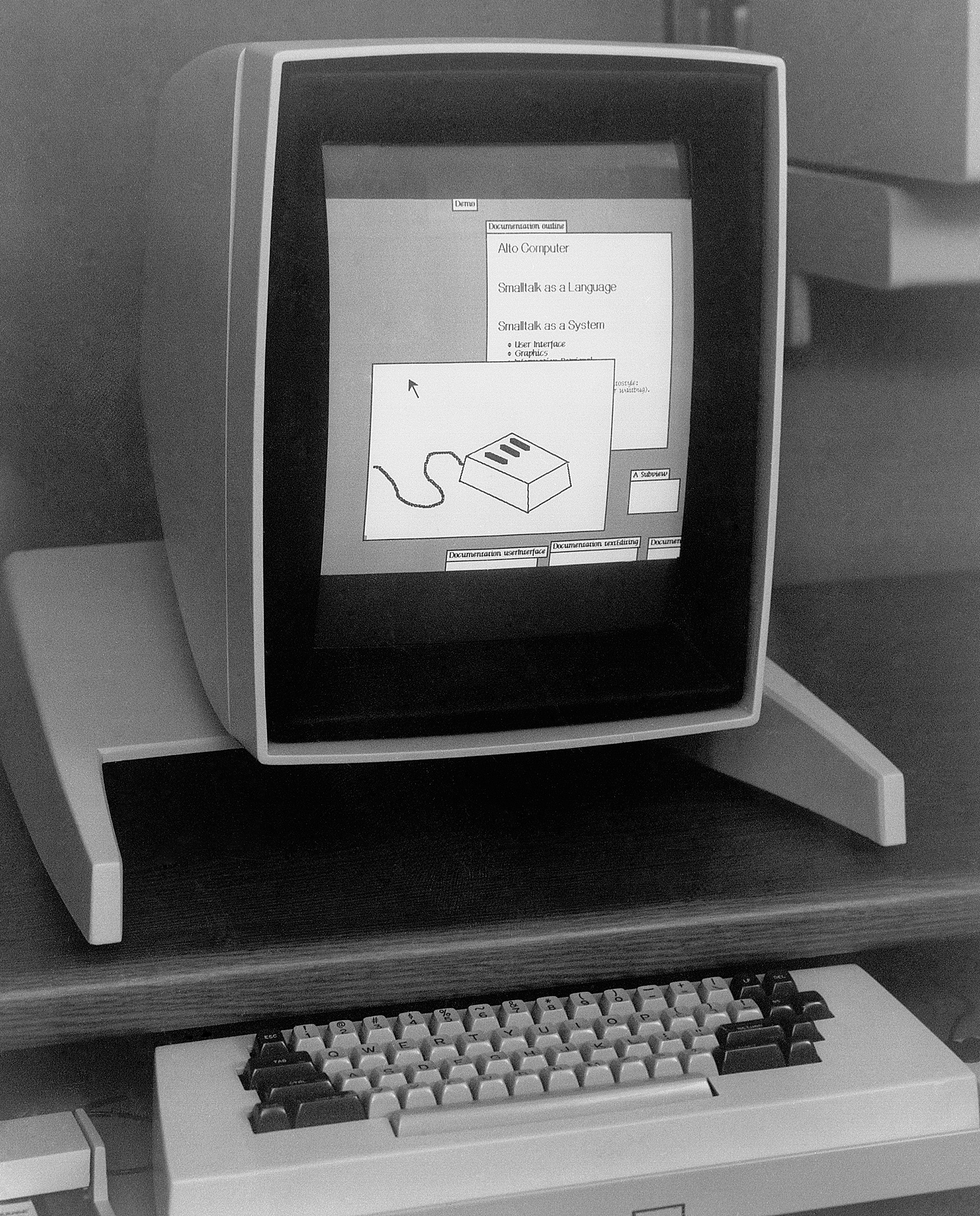
PARC, a Xerox company
Rather, it’s half-century-old hardware running software of the same vintage, meticulously restored and in operation at the Computer History Museum’s archive center. Despite its age, using it feels so familiar and natural that it’s sometimes difficult to appreciate just how extraordinary, how different it was when it first appeared.
I’m talking about the Xerox Alto, which debuted in the early spring of 1973 at the photocopying giant’s newly established R&D laboratory, the Palo Alto Research Center (PARC). The reason it is so uncannily familiar today is simple: We are now living in a world of computing that the Alto created.
The Alto was a wild departure from the computers that preceded it. It was built to tuck under a desk, with its monitor, keyboard, and mouse on top. It was totally interactive, responding directly to its single user.
The Computer History Museum’s Center for Software History sponsored a project to restore an original Alto computer.www.youtube.com
In contrast, the dominant mainframe at the time—IBM’s hugely popular System 360, heavily used by big organizations, and the Digital Equipment Corp.’s PDP-10, the darling of computing researchers—were nothing like the Alto. These and the other mainframes and minicomputers of the era were room-size affairs, almost always located somewhere away from the user and almost always under the control of someone else. The many simultaneous users of one such computer shared the system as a common resource. They typically connected to it with a teletypewriter, though the most avant-garde users may have employed simple text-only video terminals.
The people who developed the Alto came to Xerox PARC from universities, industrial labs, and commercial ventures, bringing with them diverse experiences and skills. But these engineers and programmers largely shared the same point of view. They conceived and developed the Alto in a remarkable burst of creativity, used it to develop diverse and pathbreaking software, and then moved out of Xerox, taking their achievements, design knowledge, and experiences into the wider world, where they and others built on the foundation they had established.
The computer, and the office, of the future
Broadly speaking, the PARC researchers set out to explore possible technologies for use in what Xerox had tagged “the office of the future.” They aimed to develop the kind of computing hardware and software that they thought could be both technologically and economically possible, desirable, and, perhaps to a lesser extent, profitable in about 10 to 15 years.
The type of computing they envisioned was thoroughly interactive and personal, comprehensively networked, and completely graphical—with high-resolution screens and high-quality print output.
This vision wasn’t entirely new or limited to Xerox PARC. Rather, the elements of it had developed over the previous decade among a community of computing and artificial-intelligence researchers at a handful of academic institutions and firms. The U.S. Department of Defense’s Advanced Research Projects Agency (ARPA, now DARPA), the primary funder for academic computing and AI research in the United States from 1961 to 1970 (and for decades beyond), had curated these researchers for generous support contracts. Naturally enough, these ARPA contractors became leaders in U.S. computing.
So the broad vision for computing’s future was well in place when, at the close of the 1960s, Xerox decided to create a new corporate R&D laboratory. Xerox had established a patent position giving it a virtual monopoly in photocopying, controlling 90 percent or more of the US $1.7 billion U.S. market in 1972— about $12 billion in today’s dollars. The riches that resulted made it easy for the company to bankroll this new R&D laboratory focused on forward-looking projects.
Oddly, at the time, an expensive new laboratory was also immediately financially attractive: R&D expenditures were frequently counted as assets instead of business expenses, all with Wall Street’s approval. The more you spent, the better your balance sheet looked.
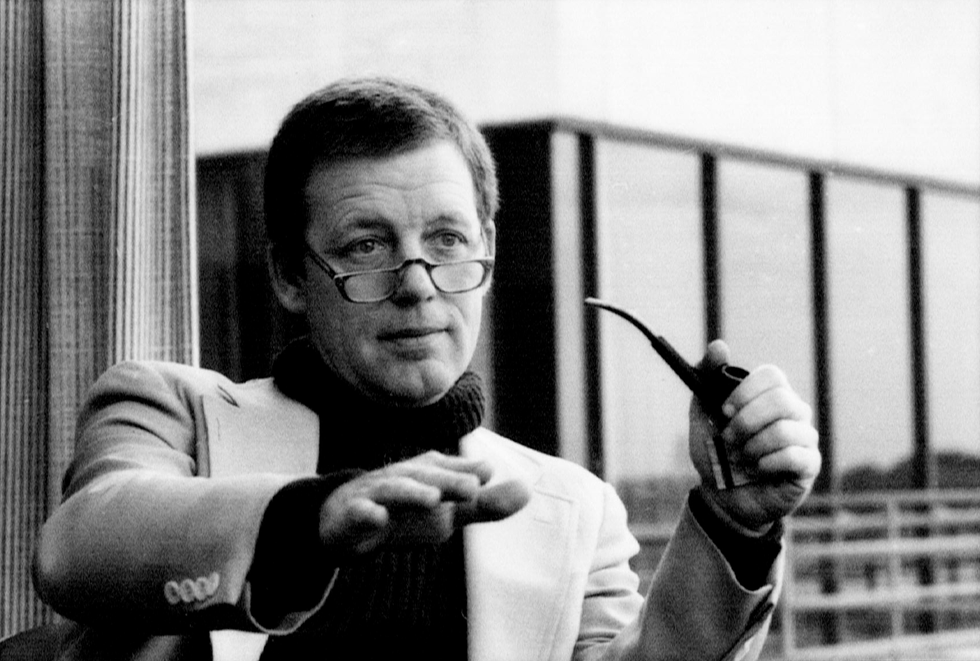
The new laboratory was to include sections intended to extend Xerox’s lock on patents surrounding the physical production of documents in offices, that is, materials like photoconductors—which become more electrically conductive when exposed to light—along with toners and optics, all key parts of copier technology. Other sections were to be devoted to computing, including the Computer Science Laboratory led by Jerry Elkind and Bob Taylor. The two were disciples of J.C.R. Licklider, long a prominent evangelist for personal, interactive, networked computing through his roles at MIT, Bolt Beranek & Newman (a contract research company deeply involved in building the Internet, now Raytheon BBN), ARPA, IBM, and numerous professional organizations.
Xerox buys into computing
This wasn’t Xerox’s only big bet on computing. By the late 1960s, Xerox executives had begun to see information technology make an impact in the office environment. Computers were generating reports, inventories, and analyses on paper for the use of office workers. IBM, which was the dominant producer of the quintessential office machine, the electric typewriter, had become a hugely profitable giant in computing. So in March 1969, Xerox agreed to acquire computer-manufacturer SDS—which had made some inroads into the timeshared-computing market with minicomputers—for the eyebrow-raising price of $900 million (a value of more than $7 billion today).
Just a few months later, Xerox’s leadership was debating where to locate their new laboratory. In a memo to the CEO in June of 1969, Jacob Goldman, Xerox’s chief scientist, who was responsible for setting up the new laboratory, outlined some possible locations and some of the problems with them:
New Haven? “Traditional Yale faculty snobbery.” Princeton? “Community not a hospitable one.” Boston? “Job hopping is a way of life.” Southern California? “Attractive, smog-free residential areas too remote.” The late Chuck Thacker, perhaps the key designer of the Alto hardware, kept a photocopy of this memo, which now resides in his papers at the Computer History Museum.
Initially, the executives deemed Palo Alto too far from other Xerox locations, but they quickly overcame that reservation, and the Xerox Palo Alto Research Center was born.
To populate PARC’s computing-research sections, Taylor harvested throughout the ARPA community, enticing many of its promising young researchers by offering them a new well-heeled venue for pursuing their collective vision for interactive, networked, graphical, personal computing. Into PARC flowed many former ARPA contractors, including some from Stanford’s Artificial Intelligence Laboratory, the University of Utah‘s computer graphics operation, Doug Engelbart’s group at SRI, and BBN’s artificial-intelligence efforts. Taylor also drew researchers from the Berkeley Computer Corp. (BCC), a struggling startup that had emerged from ARPA-funded Project Genie‘s attempt to build an interactive programming environment on a timeshared computer at the University of California, Berkeley.
Enter the Dynabook
Alan Kay, who had been known in ARPA circles first as a graduate student at the University of Utah and then as a young researcher at Stanford, joined PARC soon after it opened its doors in 1970. There, Kay established the Learning Research Group centered around his conception of a hand-held, screen-oriented, graphical, networked personal computer, which he called the Dynabook. If you’ve ever used an iPad or other tablet computer, the similarity to Kay’s Dynabook idea is astonishing.
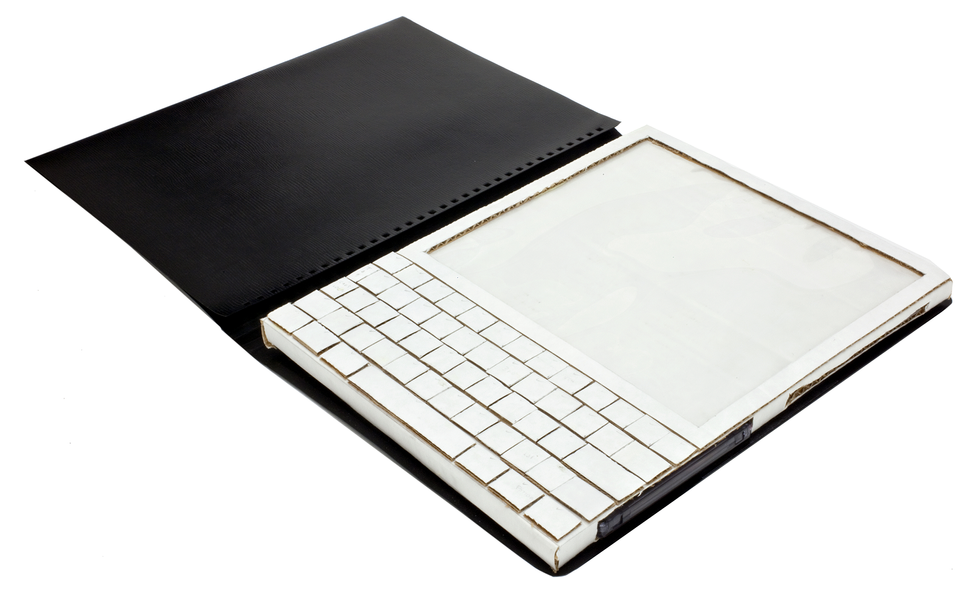
Kay envisioned a new sort of software environment and programming language for the Dynabook. In this digital world, children and adults alike would be able to create their own tools, models, and simulations; share them and build on one another’s work; and exchange the resulting knowledge. The key to accomplishing all that would be a new approach to coding that came to be known as object-oriented programming.
Not long after Kay had articulated his vision in an internal PARC memo and had attracted researchers like Dan Ingalls, and later Adele Goldberg, to work toward it with him, he was approached by Thacker and Butler Lampson. These two PARC researchers also wanted to build a small single-user computer.
Former Xerox PARC researcher Adele Goldberg discusses Smalltalk, the programming language that she helped develop.www.youtube.com
Lampson and Thacker had come to PARC from the ashes of the BCC to work in PARC’s Computer Science Laboratory. At BCC, and previously at Project Genie, the pair had made significant contributions to timeshared computing. The essence of timesharing was just what it sounds like—sharing the capabilities and resources of a larger computer among multiple simultaneous users. Lampson and Thacker now suspected that the future might not lie in timesharing but rather in small computers, each used exclusively by an individual and networked together for communication and for sharing files of all sorts.
Lampson and Thacker proposed to Kay that he give them most of his group’s annual budget to build one of these small computers quickly and relatively inexpensively. It would be ready in just a couple of months and have many of the characteristics of the Dynabook. But instead of being portable, this small computer would fit under a desk. And instead of being able to sketch on a screen with a stylus, as Kay imagined for the Dynabook, it would use a mouse (an earlier invention from Engelbart’s SRI laboratory) as a pointer to navigate a cursor on a high-resolution graphical display.
Kay gambled his budget on Lampson and Thacker’s proposal, calling it the “Interim Dynabook.” Taylor, the charismatic comanager of the Computer Science Laboratory, quickly gave the small computer its official name: the Alto.
The Alto design meets Moore’s Law
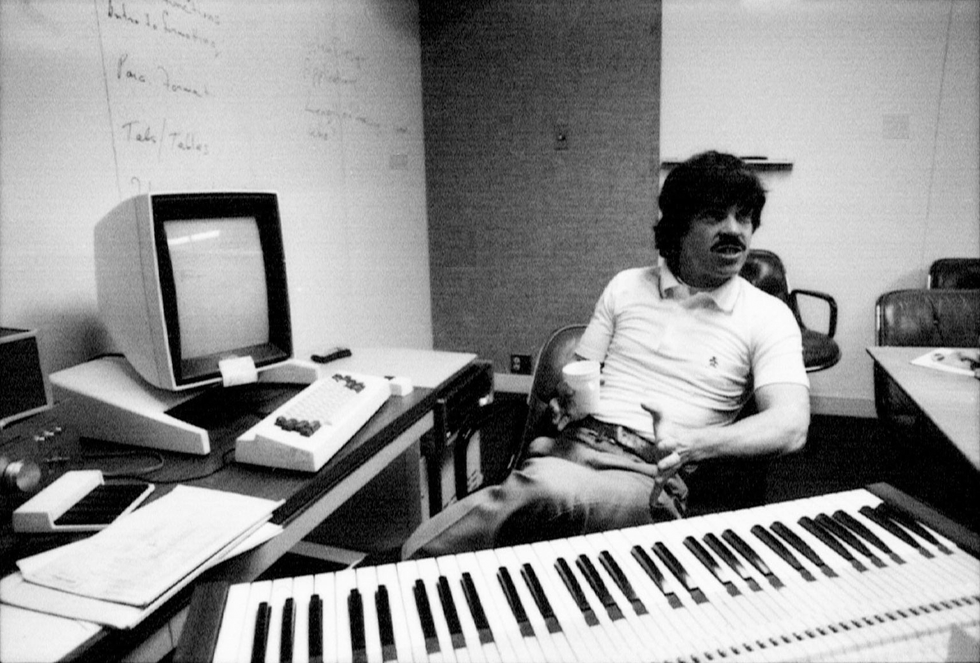
PARC’s collective bet on the future of integrated circuits shaped Thacker’s approach to designing the Alto. The computer would require a large amount of expensive main memory to display its graphics on-screen, but PARC’s researchers reasoned that the trend for integrated circuits of increasing complexity to slash the cost of computing (soon to be known as Moore’s Law) was real and would continue. So although the cost of the Alto’s memory using the new 1103 DRAM chips from Intel would be huge at first, in a decade or so, the researchers figured, the cost of memory would be exponentially less.
In December 1972, Lampson penned an internal memo, “ Why Alto?,” that argued for PARC creating large numbers of Alto computers. Of course, Kay’s group would need a dozen or so for the development of their inventive software environment and programming language (which would soon become known as Smalltalk) and their planned learning experiments with children. But, Lampson argued, the Alto would also be perfect for much broader experiments in personal computing and networking.
While Elkind, the other comanager of the Computer Science Laboratory, was skeptical of the proposal, he became a convert after seeing the prototype Alto in April 1973. By 1974, as historian Leslie Berlin has noted, Elkind was promoting the Alto in the strongest possible terms to top company executives as Xerox’s route to the future of computing.
He wasn’t the only convert. Once researchers at PARC tried out the Alto, they wanted it. Over the years, hundreds of these machines were produced, proliferating throughout PARC, into Xerox more widely, and eventually outside of the firm in select locations, including university laboratories and even the White House.
From Alto to Ethernet to 3Com
It was Bob Metcalfe, then a young networking expert straight out of graduate school at Harvard, who came up with the local-networking approach for the Altos that would eventually become critical in computer networking writ large.
On 22 May 1973, Metcalfe wrote a memo describing his “ETHER Network.” His design built on networking technology from the famed Arpanet, then being constructed, along with an experimental digital radio network developed at the University of Hawaii called ALOHAnet. By November 1973, Metcalfe and another PARC researcher, David Boggs, had developed a network that began to come to life inside the research center.
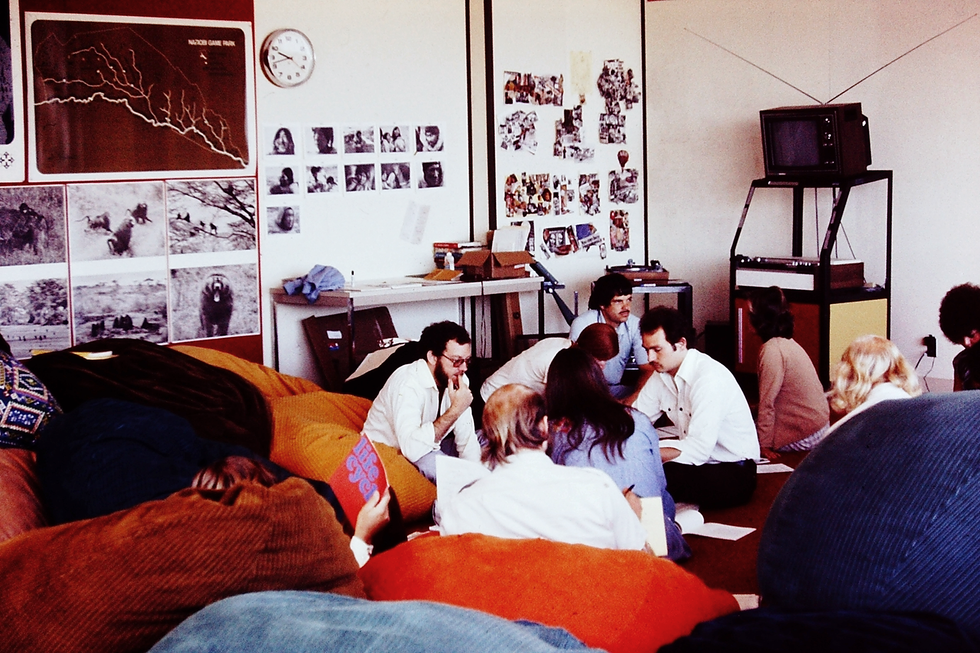
Metcalfe left PARC in 1979 to found 3Com, which, along with other startups, commercialized Ethernet. Ethernet soon became the dominant local-networking standard and remains a vitally important wired-networking technology used today.
Remarkably, the researchers at PARC had actually succeeded in making the computer of the future. The networked Alto machines—and the astonishing array of software developments they enabled—wove together the key elements of personal computing that surround us to this day.
Steve Jobs and the escape of the Alto
But in no way was the Alto the last—or the complete—word on personal computing. Xerox’s attempt to turn the Alto into a true commercial product, 1981’s Xerox Star, introduced a common graphical interface on the metaphor of a desktop, with graphical icons for files, folders, printers, and the like. Nevertheless, the true success of the Alto’s computing idiom required that the technology escape the confines of the monopolist firm that had given rise to it. The approach pioneered at PARC only truly thrived in the more open, horizontal, competitive market of the early personal-computer industry. Success required a larger community.
Steve Jobs and a whole team from Apple toured PARC in 1979. The visit was arranged as a quid pro quo for allowing Xerox to invest in Jobs’s exciting new personal-computer company. Viewing Alto’s graphical user interface, Jobs had what he later described as an epiphany, one that reoriented his efforts at Apple forever after. He quickly hired Larry Tesler from PARC; Tesler had made key contributions to the Alto’s software, including programs for document editing, printing, and Smalltalk.
Former PARC researcher Larry Tesler demonstrates Gypsy, the modeless text editor he helped create.www.youtube.com
Many other PARC researchers would join Apple and help it bring the graphical user interface into prominence. Meanwhile, PARC researcher Charles Simonyi, who had developed the Alto’s extremely popular Bravo “What you see is what you get” (WYSIWYG) word processor, left for Microsoft, where he would work to turn Bravo into Word and launch Microsoft into the world of application software.
Smalltalk was eventually commercialized by a PARC spinoff at the end of the 1980s, accelerating the profound effects that Smalltalk and object-oriented programming were already having on the development of software and coding.
Also in the early 1980s, an entire group of researchers left PARC to start Adobe, aiming to commercialize the approaches to computer printing and digital typography they had explored at PARC. Adobe’s technology was essential to what became a multibillion-dollar market in desktop publishing and, later, to the now ubiquitous PDF.
While these and many other companies made computing the Alto way the industry standard, Xerox, too, directly benefited from the research at PARC. Laser printing, invented by Gary Starkweather at PARC not long after the opening of the laboratory, paid Xerox handsome dividends as it slowly but surely displaced other technologies for document duplication and printing.
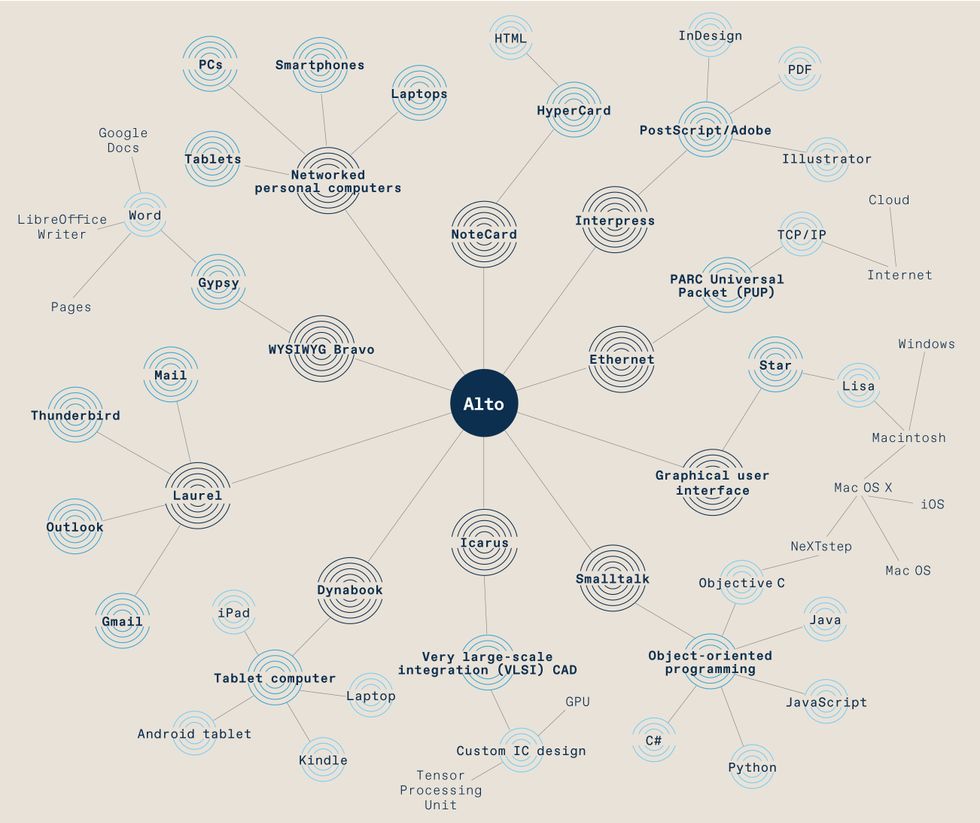
As should now be apparent, how the Alto came to shape our lives with computers a half century later isn’t the story of any one individual. In our culture, however, the history of technology is habitually presented as a sequence of remarkable individual achievements. But this is wrong. Innovation is the work of groups, of communities. These provide the context and the medium for the actions of the individual. Leadership is a meaningless concept outside of a group.
The remarkable story of the Alto is the story of such communities. It is a story of how a broad research community developed a shared vision for interactive, networked, graphical, personal computing. It is a story of how a smaller group of talented individuals came together in a new laboratory to realize that vision and to experiment with it. And it is a story of this group moving on, finding new colleagues and organizations in the rapidly expanding personal computer industry, and working for decades to bring the Alto way of computing to the world.
The Computer History Museum holds extensive collections related to the Alto and the community that created it. To mark the 50th anniversary of the Alto and of Ethernet, the museum will be releasing to the public a remarkable digital archive of the work at PARC from the 1970s to 1994. To follow this public release, and that of other historical source code, visit https://computerhistory.org/art-of-code/
This article appears in the March 2023 print issue as “The Machine That Transformed Computing.”
- How the Graphical User Interface Was Invented ›
- The Xerox Alto Struts Its Stuff on Its 40th Birthday ›
- Xerox Parc’s Engineers on How They Invented the Future ›
- The Do-or-Die Moments That Determined the Fate of the Internet - IEEE Spectrum ›
- Xerox Donates Legendary PARC Research Center - IEEE Spectrum ›
- Ethernet is Still Going Strong After 50 Years - IEEE Spectrum ›
- IBM’s Executive Terminal Was a War Room for Top Managers - IEEE Spectrum ›
